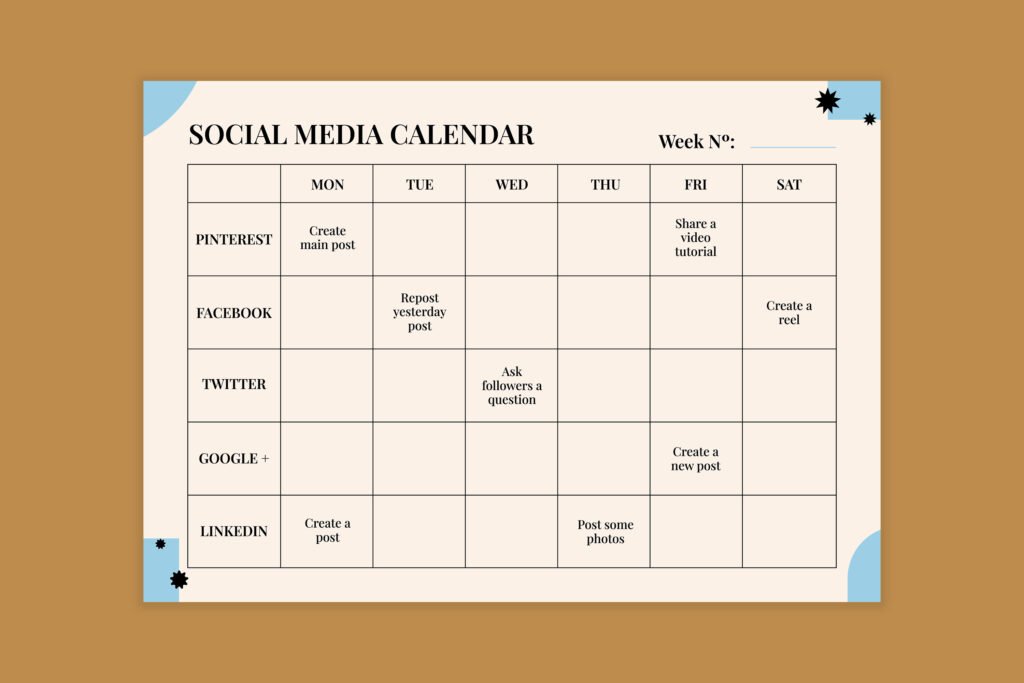In today’s digital landscape, where attention spans are fleeting and competition is fierce, crafting a strategic social media content plan is paramount for businesses seeking to establish a robust online presence. By aligning content creation with overarching marketing objectives, organisations can effectively captivate their target audiences, foster meaningful engagement, and ultimately, drive tangible results.
The Power of Written Content: Blogs, Articles, and Guides
Crafting high-quality written content, such as blog posts, articles, and comprehensive guides, offers a multitude of advantages for businesses seeking to bolster their credibility and industry authority. These long-form pieces not only showcase a company’s expertise but also provide valuable insights and solutions to the pressing queries and challenges faced by their target audience.
While the realm of written content is undoubtedly saturated, the key to standing out lies in creativity and a deep understanding of the audience’s needs. By closely monitoring trending searches and leveraging data-driven insights, businesses can uncover the burning questions and pain points that resonate with their audience, thus fuelling compelling content ideas that truly resonate.
Optimising Distribution Channels
Once the written content is meticulously crafted, strategic distribution across the appropriate platforms is crucial for maximising reach and impact. Platforms like LinkedIn and Facebook are particularly well-suited for long-form content, allowing businesses to share entire pieces, captivating snippets, or enticing links that drive traffic to their websites. Twitter, while constrained by character limits, can still serve as an effective conduit for piquing interest and directing audiences to the full content.
Embracing the Content Calendar
To maintain a cohesive and consistent content strategy, businesses should embrace the power of a well-structured content calendar. This invaluable tool serves as a framework for the overarching narrative and messaging that a company wishes to convey, transforming broad strategies into actionable plans that can be refined based on performance insights.
By visualising scheduled and completed marketing efforts across various channels, including emails, social posts, and digital advertisements, businesses can ensure a seamless and harmonious experience for their audience. Additionally, content calendars enable organisations to filter and tailor their messaging to specific audience segments, fostering a personalised and engaging experience.
The Allure of eBooks: Showcasing Expertise
While blog posts and articles are invaluable assets in a content marketing strategy, eBooks offer a unique opportunity for businesses to truly showcase their industry expertise and thought leadership. By compiling a series of in-depth, thematically linked blog posts or commissioning the services of professional writers, businesses can create comprehensive resources that stand out from the crowd.
Platforms like LinkedIn, where professionals actively seek knowledge and insights relevant to their careers and interests, present an ideal environment for sharing and promoting eBooks. Facebook and Twitter can serve as secondary channels, amplifying the reach and visibility of these valuable resources.
Curating External Content: A Complementary Strategy
In the fast-paced digital world, there may be instances when businesses find themselves short on time or resources to create original content consistently. In such scenarios, curating and sharing relevant articles, resources, and trusted industry insights from external sources can serve as a valuable complementary strategy.
While this approach should not entirely replace the creation of proprietary content, it can effectively bridge gaps and maintain a consistent presence across social media channels. However, it is crucial to thoroughly vet the external sources and ensure alignment with the brand’s values and messaging, as well as closely monitor engagement metrics to gauge the effectiveness of curated content.
The Power of Visual Storytelling: Images and Videos
In an era where attention spans are increasingly fragmented, visual content has emerged as a potent tool for capturing and retaining audience engagement. High-quality images and videos not only enhance the aesthetic appeal of social media posts but also serve as powerful storytelling mediums, conveying messages in a succinct and impactful manner.
With the advent of sophisticated smartphone cameras and user-friendly editing applications, businesses can readily create visually captivating content without the need for expensive professional equipment. However, for those seeking a more polished and cinematic aesthetic, investing in professional cameras and editing software can elevate the quality of visual content to new heights.
Leveraging Visual-Centric Platforms
While visual content can be effectively leveraged across various social media platforms, certain networks are particularly well-suited for showcasing images and videos. Instagram and Pinterest, for instance, thrive on visually stunning content, making them ideal destinations for businesses to showcase their visual storytelling prowess. Facebook, Twitter, LinkedIn, and Snapchat also offer viable alternatives, each with its unique audience and engagement dynamics.
Additionally, incorporating visuals into blog posts and articles can significantly enhance engagement and click-through rates, underscoring the versatility and impact of visual content in a comprehensive social media content strategy.
Crafting a Cohesive Social Media Content Plan
To truly harness the power of social media content and maximise its impact, businesses must adopt a holistic and strategic approach. This involves carefully curating a diverse content mix that seamlessly blends written pieces, eBooks, curated insights, and visually captivating elements.

By aligning this content strategy with overarching marketing objectives and audience personas, businesses can craft a cohesive social media content plan that resonates with their target audience, fosters meaningful engagement, and ultimately drives measurable results.
Establishing a Consistent Brand Voice and Tone
Consistency is key when it comes to building a recognisable and trustworthy brand presence across social media channels. Establishing a distinct brand voice and tone not only enhances brand recognition but also cultivates a sense of familiarity and trust with the audience.
Whether it’s a light-hearted and conversational tone or a more formal and authoritative approach, businesses should strive to maintain a consistent voice across all content formats and platforms. This consistency not only reinforces brand identity but also contributes to a seamless and cohesive user experience.
Leveraging User-Generated Content (UGC)
In the realm of social media, user-generated content (UGC) has emerged as a powerful tool for fostering authentic connections and building trust with audiences. By actively encouraging and amplifying content created by customers, fans, and brand advocates, businesses can tap into a wellspring of genuine testimonials, reviews, and creative expressions that resonate deeply with their target audience.
Integrating UGC into a social media content plan not only adds a layer of authenticity and social proof but also fosters a sense of community and belonging among the brand’s audience. This, in turn, can drive increased engagement, loyalty, and ultimately, a stronger emotional connection with the brand.
Measuring and Optimising Content Performance
In the ever-evolving digital landscape, data-driven insights are pivotal for refining and optimising social media content strategies. By consistently measuring and analysing key performance indicators (KPIs) such as engagement rates, reach, click-through rates, and conversions, businesses can gain valuable insights into what resonates with their audience and what may require adjustment.
Armed with these data-driven insights, businesses can make informed decisions about content formats, distribution channels, and messaging, ensuring that their social media content plan remains agile, relevant, and effective in driving desired outcomes.
Embracing Emerging Trends and Technologies
The social media landscape is in a constant state of flux, with new trends and technologies continuously reshaping the way audiences consume and engage with content. To remain competitive and relevant, businesses must embrace an agile mindset and stay attuned to emerging trends and innovations.
This could involve exploring new content formats, such as interactive stories, live streaming, or immersive virtual reality experiences. Additionally, leveraging advanced technologies like artificial intelligence and machine learning can unlock new avenues for personalisation, content curation, and audience targeting, enhancing the overall effectiveness of social media content strategies.
Fostering Cross-Functional Collaboration
Developing and executing a comprehensive social media content plan is a collaborative endeavour that transcends the boundaries of a single department or team. By fostering cross-functional collaboration among marketing, content creation, social media management, and other relevant teams, businesses can leverage diverse perspectives, skills, and expertise to create truly impactful and cohesive content strategies.
This collaborative approach not only ensures alignment with overarching business objectives but also facilitates the seamless integration of social media content efforts with other marketing and communication initiatives, resulting in a holistic and unified brand experience for the audience.
Conclusion: Embracing the Power of Social Media Content Planning
In the dynamic and ever-evolving social media landscape, a well-crafted content plan is an indispensable tool for businesses seeking to captivate audiences, cultivate meaningful connections, and drive tangible results. By seamlessly blending written content, eBooks, curated insights, and visually compelling elements, organisations can establish a strong and consistent brand presence across multiple platforms.
However, the true power of social media content planning lies in its ability to align with overarching marketing objectives, foster cross-functional collaboration, and embrace emerging trends and technologies. By continuously measuring and optimising content performance, businesses can refine their strategies, ensuring that their social media presence remains agile, relevant, and impactful.
Ultimately, a comprehensive social media content plan is not just a collection of individual content pieces; it is a strategic blueprint that guides businesses in crafting compelling narratives, fostering authentic connections, and driving measurable success in the digital world.









